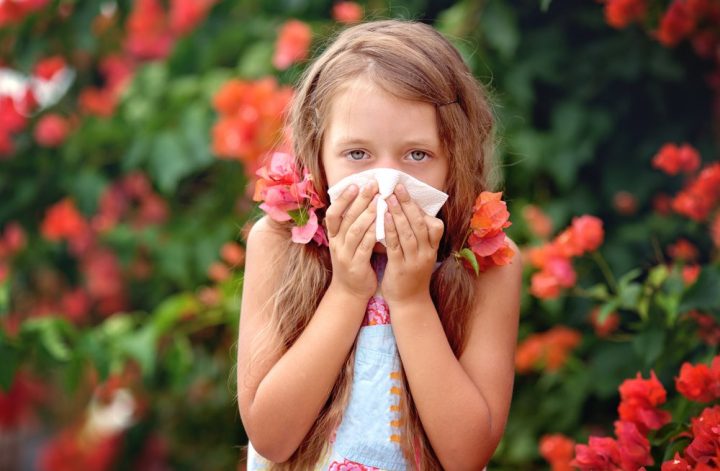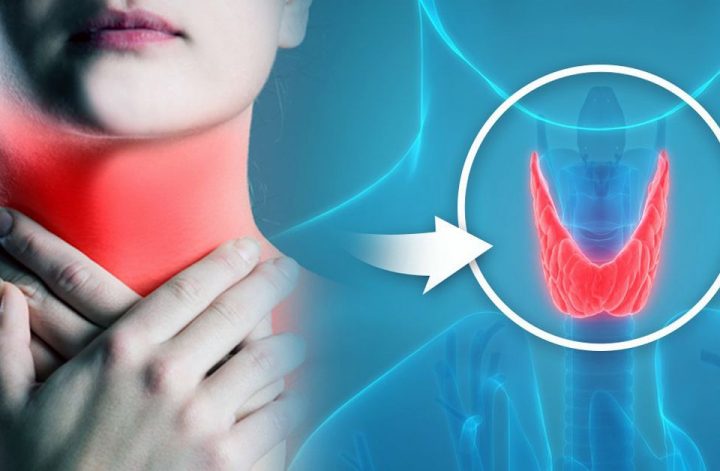A couple of centuries ago, the world did not know “what an allergy is”, and today every third child suffers from it. In this case, the symptoms of the disease often pass “under the guise” of completely different diseases, which can lead to the wrong path of treatment. So how not to confuse childhood illnesses and identify their real cause?
How does
All allergic reactions can develop in at least 4 ways, but this article will focus on the first and most common of them – the IgE-dependent pathway.
The peculiarities of the child’s body, especially in the 1st year of life, normally protect the child from the development of allergies. Immunity is designed in such a way as to “acquaint” the baby with the abundance of surrounding antigens, while not causing pathological conditions.
In some cases, this mechanism fails, which may be due to:
heredity (one parent “with allergies” – 30% risk of pathology in a child, both parents – 60% risk);
violation of the barrier function of the mucous membranes;
congenital features of immunity.
In this case, at the first “meeting” with the allergen, the body only “remembers the unpleasant object” (it starts the synthesis of IgE antibodies to the allergen), and already at the second “attacks” it.
The defense mechanism is realized due to biologically active substances emitted by cells “on command” of IgE antibodies, and is manifested:
expansion of capillaries and an increase in their permeability = redness and swelling (to accelerate the entry of immune cells into the focus),
irritation of nerve endings and spasmodic contraction of “target” muscles = itching, coughing, sneezing (as a way to mechanically “get rid” of the allergen),
increased mucus production = runny nose (to facilitate binding and excretion of the “irritating” object).
Interestingly, allergies and ARVI have similar “points of application”. This determines the similarity of symptoms, as well as the propensity of allergy sufferers to acute respiratory diseases.
Symptoms and Causes
Conditionally allergic diseases can be divided into respiratory (inhaled antigens) and food. The symptoms of the former range from a mild runny nose to severe suffocation, while the latter have cutaneous and “digestive” manifestations.
“Respiratory” allergy in a child can manifest itself not only with classical symptoms, but also simply with a “constantly stuffy nose”, and the reason may be:
1.mites (house dust, feather, flour and others)
This allergy occurs when it comes into contact with dust (home, book) and carpets, and most often occurs in a specific room.
2.fowl and feathers of birds
The reaction can be associated with both live birds (parrots, canaries, and others), and with bedding (pillows and blankets), in which down and feathers are used as filler. In the second case, allergy often manifests itself during sleep and immediately after waking up (nasal congestion or coughing, passing during the day)
3.Dandruff and epithelium of animals (cats, dogs, hamsters, guinea pigs, horses, etc.).
At the same time, wool itself (hairs) is safe in the context of allergies. It is the skin elements that accumulate on the wool that cause the reaction.
4. “home” molds
They live in warm, humid and poorly ventilated places of the room: the seams between the tiles in the bathroom and the space under the wallpaper of the “damp” walls. Symptoms are often severe and only go away with prolonged exposure to an “allergenic” room.
5.trees and grasses
Allergies are seasonal in nature and appear during the flowering period of the plant: late spring, summer or early autumn.
Skin symptoms, in mild cases, are an itchy rash that resolves when the allergen is removed. And more severe reactions are accompanied by the development of dermatitis, which is characterized by a chronic course and difficult to treat.
Thus, stool disturbances, abdominal pain, as well as nausea and decreased appetite in a child may well be signs of allergies and require a comprehensive examination.
Among the most “significant” food allergens in children are:
1. cow’s milk proteins: β-lactoglobulin, α-lactalbumin, bovine serum albumin, and casein.
Depending on the reaction to certain proteins, dairy products should be excluded partially or completely.
2. chicken egg proteins: ovomucoid, ovalbumin, lysozyme.
3.nuts;
4. proteins of cereals, especially gliadin (gluten) of wheat and rye, barley and oats;
5. fish and seafood;
6. cocoa, citrus and soy.
Diagnostics
It is often impossible to distinguish allergies from similar diseases “by eye”. It is possible to “experimentally” confirm the allergenic nature of symptoms only by eliminating the “suspected” allergen. And in cases where there is none, laboratory tests can help in the diagnosis.
The first stage of diagnosis serves to confirm the allergic nature of the disease and is based on:
1.1 General analysis of blood with a leukocyte formula, where eosinophils serve as a marker of allergy.
1.2. A blood test for immunoglobulin E, total and eosinophilic cationic protein, increasing in allergies tens and hundreds of times.
1.3. Microscopic examination of nasal secretions (nasal swab), also aimed at identifying eosinophils.
After establishing an allergy as the main diagnosis, you can proceed to the definition of a subgroup or the allergen itself.
The first option is used in case of doubt as to the source of the allergy, and to narrow the “search circle” and use prefabricated panels. They contain several representatives of the allergy group at once, and the result is given in one number.
These could be panels of allergens
herbs
trees,
animals,
ticks
mold fungi,
meat,
dairy,
citrus
and many others.
If you receive increased results in any of the panels, you can proceed to the third stage of diagnostics – the identification of the allergen itself. For this, a blood test for IgE to individual allergens https://en.wikipedia.org/wiki/Allergen (for example, a specific mold or a representative of citrus fruits) is used.



